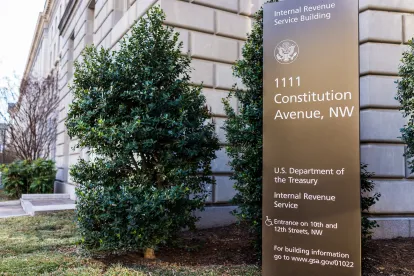A few months ago we wrote about Congress utilizing the Inflation Reduction Act of 2022 to offer bonus tax credits[1] to certain energy facilities for meeting specified “domestic content” requirements.[2] Relying heavily on the Government’s prior experience with domestic content authorities, including the Federal Transit Authority’s (“FTA”) “Buy America” regulations, we discussed how the regulations, as written, left the renewable energy industry with more questions than answers on the applicability of the domestic content bonus tax credit to their current and future projects. Though we walked through our then-understanding of the regulations, including providing our own step-by-step analysis of how to comply with, and therefore receive, this domestic content bonus credit, we recognized that Treasury was in the process of issuing guidance that (we hoped) would shed more light on compliance obligations. After months of waiting, on May 12, 2023, Treasury, along with the Internal Revenue Service (“IRS”), released its long awaited Guidance (Notice 2023-38). In all fairness to Treasury, the Guidance does provide answers to many lingering questions. But, at the same time, the Guidance provides analysis that differs both from industry’s expectations and the FTA’s Buy America regulations in several significant respects – potentially opening a new can of compliance questions and concerns.
Our prior post spilled much ink outlining the requirements of the IRA and the requirements for meeting the domestic content tax credit requirements. We do not re-hash those issues here. Instead, this summary focuses on a number of ways the Guidance addresses some of our initial questions, as well as very briefly detailing the ways in which the Guidance differs from and/or confirms the step-by-step analysis we previously outlined.
Applying the Domestic Content Requirements to Your Applicable Projects (Revised)
In our previous analysis, we outlined a 5-step process for applying the domestic content tax credit to qualified facilities. Though much of that analysis remains accurate even after the recent Treasury Guidance, we present a handful of corrections and clarifications based on our interpretation of the Guidance.
Step 1: Identify Your Applicable Project
The Treasury Guidance adopts the phrase “Applicable Project” to identify those qualified facilities, energy projects, and investments that are subject to the domestic content tax credit under 26 C.F.R. Sections 45, 45Y, 48, and 48E. Accordingly, Step 1 remains the same – identify the particular “project” or “facility” to be analyzed, ensuring it falls under one of the enumerated categories. In other words, no Applicable Project, no bonus tax credit.
One helpful clarification provided by the Treasury Guidance is that repowered projects that otherwise are “Applicable Projects” and that satisfy the 80/20 rule are eligible for the domestic content bonus credit amount if the new property in the project meets the domestic content requirements.[3]
Step 2: Identify the “Applicable Project Components” of the Applicable Project
Anyone who has spent any time over the past year discussing the domestic content tax bonus credit knows how easily those discussions are overcomplicated by the dual usage of the word “component.” Much time has been spent distinguishing between a “component” of an Applicable Project, and a “component” of a Manufactured Product, and the different domestic content thresholds that apply to each. Fortunately, the Guidance has adopted several new terms to aid in this distinction, including “Applicable Project Components,” which in turn includes “Applicable Project Components that are Manufactured Products,” which are distinct from “Manufactured Product Components.”
“Applicable Project Components” are the “article[s], material[s], or suppl[ies], whether manufactured or unmanufactured, that [are] directly incorporated into an Applicable Project.” (emphasis added). Applicable Project Components can be: (1) steel, (2) iron, or (3) manufactured products.[4] These are the “components” that must meet the domestic content requirements for the Applicable Project to receive the bonus credit. As explained previously, the key characteristic here is that the product is incorporated directly into the Applicable Project. Treasury Guidance even includes an example list of Applicable Project Components in Table 2 of the Guidance for certain types of projects. For example, in a utility-scale photovoltaic system project, Applicable Project Components include: steel photovoltaic module racking, pile or ground screws, iron or steel rebar in foundation, photovoltaic trackers, photovoltaic modules, and inverters. These are components that must be “produced in the United States.” Thus, Step 2 remains identifying these Applicable Project Components to identify what production requirement will apply to each.
Step 3: Determine Whether any Applicable Project Components Made “Primarily” of Iron or Steel are Produced in the United States
The Treasury Guidance affirms that this analysis should be conducted in line with the FTA’s Buy America regulations at 49 C.F.R. Section 661.5, as we previously suggested – that is, these Applicable Project Components must be 100% produced in the United States.
However, the Guidance still does not describe what it means for a product to be made “primarily” of iron or steel – for purposes of this analysis, we continue to use the Buy American Act’s 50% threshold to determine whether a product is made “primarily” of iron or steel. The Guidance does, however, further limit the scope of the domestic content requirement to those products made “primarily” of iron or steel that also are (1) construction materials, and (2) structural in nature. In other words, the 100% requirement does not apply to steel or iron used in manufactured products, it does not apply to non-construction materials, and it does not apply to materials that are not structural in nature. For example, the Guidance expressly states that the following items, though they may be made primarily of iron and steel, are not subject to these iron and steel requirements, because they are not structural in function: nuts, bolts, screws, washers, cabinets, covers, shelves, clamps, fittings, sleeves, adapters, tie wires, spacers, and door hinges.
Accordingly, companies must look to identify not only those Applicable Project Components that are made primarily of iron or steel, but also whether they can be considered construction materials and structural in nature. Under Step 3, all such Applicable Project Components must be 100% produced in the United States for the project to qualify for the tax credit.
Step 4: Determine Whether any Applicable Project Components that are Manufactured Products are Produced in the United States
Again the Treasury Guidance generally affirms the Manufactured Products analysis should be conducted in line with the FTA’s Buy America regulations. Thus, for a Manufactured Product to meet the Manufactured Products Requirement, it must generally meet a two-part test: (1) all of the manufacturing processes for the Manufactured Product must take place in the United States, and (2) all of the Manufactured Product Components of the Manufactured Product must be of U.S. origin. For a Manufactured Product Component to be of U.S. origin it must be manufactured in the United States, regardless of the origin of its subcomponents. If an Applicable Project Component meets both elements of this test, it is considered a U.S. Manufactured Product, and 100% of those costs can count towards your domestic content threshold (as described below).
However, the Guidance deviates from the FTA Buy America regulations in one material respect. Where the FTA Buy America regulations adopt a strict, 100% standard for the Manufactured Product to count as domestic content, the Treasury Guidance provides an alternative path to qualification. That is, “Applicable Projects Components that are Manufactured Products,” can meet the Manufactured Products Requirement if either they meet the above-stated, 100% manufactured test, or they are “deemed to be produced in the United States” according to the Adjusted Percentage Rule described below. In other words, if the Applicable Project satisfies the Adjusted Percentage Rule, then all “Applicable Project Components that are Manufactured Products” satisfy the Manufactured Products Requirement for certification purposes.
Step 5: Determine Whether the Applicable Project Satisfies the Adjusted Percentage Rule
As we explained previously, the 40% requirement from the Congressional mandate does not come into the equation when analyzing the Manufactured Products individually, but rather when performing your final calculations for determining the percentage of domestic content for all Manufactured Products of the Applicable Project. Where the Treasury Guidance differs from our best guess back in February, however, is in determining the “Domestic Manufactured Products and Components Cost” for this calculation. We previously hypothesized that only those Manufactured Products which satisfied the above requirements (100% manufactured in the U.S., out of 100% U.S.-origin components) could count towards the minimum 40% domestic content requirement. According to Treasury, however, companies also can consider the cost of domestic components of non-domestic Manufactured Products when making this calculation. Treasury provides us the following example to illustrate its application of this standard.
In an Applicable Project there are two Applicable Project Components that are Manufactured Products at issue. Manufactured Product 1 is 100% manufactured in the U.S. out of two U.S.-origin component parts. Manufactured Product 2 is 100% manufactured in the U.S. out of two U.S.-origin component parts, and one non-domestic component. Manufactured Product 2 thus fails the domestic content analysis under Step 4. The following table provides a breakdown of relevant costs for these products:
| Asset | Cost |
| Manufactured Product 1 | $100 |
| Component 1A | $30 |
| Component 1B | $45 |
| Manufactured Product 2 | $200 |
| Component 2A | $30 |
| Component 2B | $50 |
| Component 2C | $100 |
Back in February, we hypothesized that none of the costs associated with Manufactured Product 2 could count towards your 40% requirement. That is, of the total cost of all Manufactured Products ($300), only 33% of your costs (100/300) were domestic and therefore the facility would not qualify for the bonus credit.
Treasury’s Guidance makes clear, however, that the costs of domestic components 2A and 2B (the U.S.-origin components) also may be included as partial credit in the domestic content calculation, even though Manufactured Product 2 does not meet the standard to qualify entirely as domestic content. In other words, you add up $100 for the cost of Manufactured Product 1, $30 for the cost of domestic Component 2A, and $50 for the cost of domestic Component 2B in this analysis. And, because this amounts to 60% of the cost of all Manufactured Products (100 + 30 + 50 = 180; 180 / 300 = 0.6), this facility now qualifies for the domestic content tax credit.
(Still) Lingering Questions
Our previous article identified a few particular lingering questions that we hoped Treasury guidance would address. Treasury’s Guidance undoubtedly has shed some light on its interpretation of Congress’ mandate and how companies can go about complying with these requirements, and to a large degree the Guidance addressed our lingering questions from February. Nonetheless, some uncertainty still remains that will be key to understanding compliance obligations moving forward. Here’s where things currently stand on our previous list of lingering questions:
What is a “component” of a qualified facility? – The Guidance generally adopts the FTA Buy America regulations definition of a “component,” both when dealing with “Applicable Project Components” and “Manufactured Products Components.” As discussed above, Treasury also provided Table 2 in the Guidance, which breaks down Treasury’s analysis of what elements it considers “Applicable Project Components” and “Manufactured Products Components” for identified facilities, such as solar facilities and battery storage facilities. Table 2 is very helpful in making component determinations, even if some of the classifications seem questionable (e.g., adhesives being classified as a standalone Manufactured Product Component of photovoltaic modules). Nonetheless, project owners and financing parties will have to make some judgment calls about how to classify and account for materials that are not on the specific list in Table 2.
Is every product directly incorporated into a qualified facility considered a “component” or is there a second category of simple items necessary for installation? – Again, the Guidance directly addressed this point (in part) by identifying certain items made “primarily” of iron or steel that are not subject to the iron and steel requirements (such as nuts and bolts) because they are non-structural. The Guidance also was written in a way to suggest that products could fall into other categories of Applicable Project Components, beyond iron, steel, or manufactured components. But that’s as far as Treasury goes – the Guidance does not tell us what other categories may exist or how such categories should be treated. Our best educated guess is that any products that fall outside one of these three enumerated categories are not subject to any domestic content requirements (and therefore not included in the calculations enumerated by Treasury).
Will Treasury provide a list of specific “manufactured products” that are “components” of a qualified facility for this analysis? – Treasury again answered our question (at least somewhat). As explained above, the Guidance includes in Table 2 a safe harbor for classification of certain Applicable Project Components and Manufactured Product Components – a list made in consultation with the FTA and the Department of Energy. Although this list is helpful, Treasury indicates that it may not be exhaustive. Indeed this is evident from a review of Table 2 itself. For example, though “inter-array cable” and “export cable” are listed as Applicable Project Components for offshore wind facilities, there is no mention of cabling for either land-based wind facilities or utility scale solar systems. There would not seem to be a reason for considering collection cable as less “directly incorporated” into an onshore wind farm as compared to an offshore wind farm, so the omission of onshore cable is not likely intended by Treasury to be an indication that onshore cable (or any other item not specifically listed in Table 2) is not an Applicable Project Component.[5] In the absence of an exhaustive list, companies are left wondering whether and how other components that are not listed should be included in their domestic content threshold calculations.
What does it mean for something to be made “primarily” of iron or steel? – This remains a glaring open issue after issuance of the Guidance. Though Treasury has clarified that the iron and steel requirements do not apply to products that are non-construction materials or non-structural, it does not address the “primary” threshold. As we discussed previously, a 50% threshold is commonly used in other domestic content regimes (such as the Buy American Act applicable to federal procurements) to determine whether a product is “primarily” or “predominantly” made of iron or steel. In the absence of further guidance, applying a 50% threshold standard would seem to be a safe approach for industry in this instance.
What elements of cost should be included in the domestic content analysis? – Treasury attempted to give us guidance on allowable costs in its Guidance, albeit while deviating from customary practice under the FTA Buy America regulations and other domestic content regimes. For U.S. Manufactured Products (those products 100% manufactured in the U.S. out of 100% domestic components), companies are permitted to use “direct costs,” such as direct materials and direct labor costs, associated with producing the U.S. Manufactured Product. These terms are further defined in 26 C.F.R. 1.236A-1.
For Non-U.S. Manufactured Products that contain U.S. Components, companies are permitted to consider the costs incurred to produce or acquire the U.S. Components. However, the direct materials or direct labor costs that are paid or incurred by the Non-U.S. Manufactured Product’s manufacturer to produce the Non-U.S. Manufactured Product are not allowable – only the costs associated with the U.S. Components are allowable.
Further, expressly excluded from any cost calculations are installation costs for incorporating the Applicable Project Components into the Applicable Project, as well as any markup that the Original Equipment Manufacturer (“OEM”) receives as a result of its sale to the company. This last exclusion is where the cost element deviates from standard domestic preference regimes, and potentially will create substantial headaches for industry. Under the Buy American Act, for example, costs are broken into two categories: (1) if you bought the product/component, your acquisition costs, or (2) if you manufactured the product/component, the direct costs of manufacturing, excluding things like profit. Here, if you are working with a U.S. Manufactured Product or a U.S. Component that you procured from a third party, the Guidance suggests you will have to determine the actual costs of those items – sans profit and other markups – in order to make accurate calculations. For developers, obtaining direct cost information from OEMs likely will present significant challenges.
And, of course, we can’t write a blog article without also calling out additional lingering questions that come to mind as a result of the new Guidance. Here are a few:
How do you “prove” the domestic content requirement has been met? What supporting documentation and/or certifications does industry need to provide to the IRS? Or will project owners and financing providers need to do their best to conduct the analysis on their own, with the risk that the IRS comes to a different conclusion in a future audit?[6]
How do we treat items that aren’t included in Table 2 of the Guidance (such as cabling and main power transformers)? Will Treasury update Table 2 with more components and designations?
How do we treat items that don’t fall neatly within one of the three enumerated categories (e.g., iron, steel, and manufactured products)? How do we treat things like “construction materials” such as concrete mix? Are these products relevant to the domestic content analysis?
What protections, if any, are available under the law to Applicable Projects that do not receive the domestic content tax credit after relying on (inaccurate) representations of their suppliers? Are they limited to contractual remedies against those supplier (to the extent those remedies can be negotiated), or could they still receive the domestic content bonus if they relied in good faith on those representations that are later determined to be inaccurate?
Conclusion
It is important to keep in mind that this Guidance remains largely in draft form. IRS calls Notice 2023-38 “Initial Guidance,” and states its intent to propose regulations with this Initial Guidance. Treasury anticipates publishing this Initial Guidance in the Federal Register, which likely will contain a period for industry to submit comments and recommendations before the Guidance is formalized. Industry should use that opportunity to request further clarifications needed for compliance with these obligations.
In the meantime, it would be wise to start strategizing on the information (or certifications) you intend to seek from your suppliers to help demonstrate compliance with the domestic content requirements. Of course, feel free to reach out for more information on country of origin requirements and compliance advice for these tax credits.
FOOTNOTES
[1] Note: The domestic content bonus credit amount is equal to ten percent (10%) (not ten percentage points) for Section 45 qualified facilities and ten percentage points (so a total credit of 40%) for energy projects under Section 48, if such energy projects also satisfy the requirements of Section 48(a)(9)(B). If Section 48(a)(9)(B) is not satisfied, then the increase is equal to two percent (2%).
[2] Note: To be eligible for the domestic content bonus credit, a taxpayer must meet both the “Steel or Iron Requirement” and “Manufactured Product Requirement” for any “qualified facility,” “energy project” or “energy storage technology.”
[3] Note: Generally, Applicable Projects may qualify as originally placed in service even if they contain some used property, provided that the project satisfies the 80/20 Rule. See Rev. Rul. 94-31, 1994-1 C.B. 16; Notice 2008-60, 2008-2 C.B. 178. The Guidance specifies that an Applicable Project that is placed in service after December 31, 2022 and meets the 80/20 Rule is eligible for the domestic content bonus credit amount if the new property in the Applicable Project meets the domestic content requirement set forth in § 45(b)(9)(B)(i) (incorporated by cross-reference in § 48(a)(12), which is incorporated by cross-reference in § 48E(a)(3)(B)) and in § 45Y(g)(11)(B)(i) and the taxpayer complies with the requirements in the Guidance. Notice 2023-38, § 4.
[4] Note: The way the current Treasury Guidance is drafted, there could be Applicable Project Components that are not (1) steel, (2) iron, or (3) manufactured products. If and how to account for this fourth category of components in the domestic content analysis is a lingering question that remains unanswered.
[5] Note: Since Applicable Project Components means those items directly incorporated into an Applicable Project, it would seem reasonable to add those components typically included in the scope of ITC eligible property or 5-yr MACRS property for wind or solar assets. Consistent with this view, the Guidance defines an Applicable Project by reference to those assets that qualify for the PTC or the ITC. However, in the absence of additional guidance, it is not yet clear whether a “qualified facility” for PTC purposes should be limited to each individual wind turbine, consistent with Revenue Ruling 94-31, 1994-1 C.B. 16, or whether other components of the wind farm are also included.
[6] Note: Taxpayers will need to work with their OEMs to ensure that they not only will have evidence of the direct costs of all of the Manufactured Products and U.S. Components, but also that they are able to substantiate the location where those items were manufactured (and that such process was actually manufacturing and not “mere assembly”). We anticipate that developers financing a project with the domestic content bonus credit will need to provide a report analyzing the costs incurred for each facility and energy property from a qualified accounting firm, similar to an 80/20 analysis for retrofitted projects.






 />i
/>i
